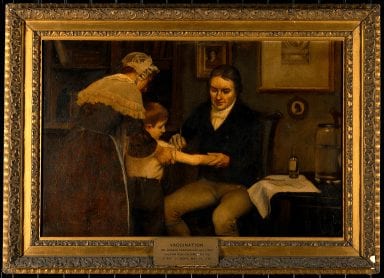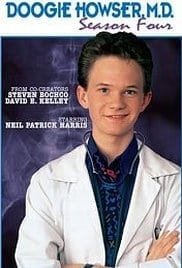Funtabulously Frivolous Friday Five 217
Just when you thought your brain could unwind on a Friday, you realise that it would rather be challenged with some good old fashioned medical trivia FFFF, introducing the Funtabulously Frivolous Friday Five 217 – children who changed medicine
Question 1
In 1796, What did James Phipps (1788-1853) participate in that significantly changed the course of modern medicine?
Reveal the funtabulous answer
Inoculation of Cowpox as a means of preventing Smallpox – and the start of vaccinations.
For many years, Edward Jenner had heard tales of dairymaids that were protected from smallpox after having suffered from cowpox. Additionally, the process of variolation (taking infective material from active smallpox lesions or powdered smallpox scabs and inserting them into superficial wounds made in the patient) had been common in Europe and America since the early 1720s. Indeed Edward Jenner himself had undergone the procedure at the age of 8.
James Phipps (1788-1853) was 8 years old in 1796, and the son of a poor labourer. In May 1796, Jenner used fresh cowpox material from a young dairymaid, Sarah Nelms to inoculate James. James developed a mild fever and axillary discomfort, on the ninth day felt cold and loss of appetite, but by the tenth day was improved. Two months later Jenner inoculated James again, this time with matter from a fresh smallpox lesion. Thankfully James remained well, and Jenner concluded that protection was complete.
We do not know if James or his father were paid for the experiment, but later in life Jenner definitely rewarded his first test subject. When James Phipps was married with children, Jenner gave him a free lease on a house. Phipps was grateful to Jenner, and attended the physician’s funeral on 3 February 1823. [Reference]
- Riedel S. Edward Jenner and the history of smallpox and vaccination. Proc (Bayl Univ Med Cent). 2005 Jan; 18(1): 21–25
Question 2
What previous eponym was Haemophilia B better known as?
Reveal the funtabulous answer
Christmas Disease, named after Stephen Christmas, in 1952.
Stephen Christmas (1947-1993) emigrated from England to Canada with his family and was diagnosed in Canada with haemophilia after multiple bleeding episodes. On a visit to London at the age of 5, Stephen was admitted and transfused for a similar bleed. His blood was noted to be part of a known, but only occasional phenomena where a mixture of blood samples from two supposedly classical cases of haemophilia had a shorter clotting time then either specimen separately. Further studies demonstrated a lack of what was then called Christmas factor (later, Factor IX). [Reference]
Stephen himself was dependent on blood and plasma transfusions, and became infected with HIV because of this. He became an active worker for the Canadian Hemophilia Society and campaigned for transfusion safety. He died of his AIDS in 1993.
- Biggs R et al. Christmas Disease. Br Med J 1952;2:1378
Question 3
Who was the first test tube baby?
Reveal the funtabulous answer
Louise Joy Brown, born 25 July 1978.
Louise Brown was born at Oldham General Hospital, England, by planned Caesarean section. Her parents had been attempting to conceive for 9 years without success and were not aware this had never been done before (raising concerns about informed consent). On 10 November 1977 Louise’s mother Lesley underwent the in vitro fertilisation, developed by Patrick Steptoe and Robert Edwards, done on a petri dish (not a test tube). Edwards would later be awarded the 2010 Nobel Prize in Medicine for the work.
Question 4
The film ‘Lorenzo’s Oil’ is actually about a boy called Lorenzo, true or false?
Reveal the funtabulous answer
True
Lorenzo Odone (1978-2008) was the son of Michaela and Augusto Odone. Lorenzo was diagnosed with adrenoleukodystrophy at age 6. Intolerant of the dire prognosis for their son, Michaela and Augusto spent years researching and learning about the disease. They eventually formulated Lorenzo’s oil which successfully halted the accumulation of very long chain fatty acids in the CNS.
Lorenzo’s Oil is a combination of a 4:1 mix of oleic acid and erucic acid, extracted from rapeseed oil and olive oil. It is specific to ALD and is NOT designed to be used to treat other leukodystrophies nor Multiple Sclerosis.
Currently only Lorenzo’s oil and stem cell transplantation are the potential therapies for the disease. [Reference]
Question 5
Who in 1998, was the youngest practicing doctor in America, aged only 14?
Reveal the funtabulous answer
Dr Douglas “Doogie” Howser, M.D
A teenage genius deals with the usual problems of growing up: having a girlfriend, going to parties, hanging out with his best friend, all this on top of being a licensed physician in a difficult residency program. [Reference]
…and finally


FFFF
Funtabulously Frivolous Friday Five
Dr Mark Corden BSc, MBBS, FRACP. Paediatric Emergency Physician working in Northern Hospital, Melbourne. Loves medical history and trivia...and assumes everyone around him feels the same...| LinkedIn |




